Absolutely! The Mercedes S-Class W223’s optional rear-axle steering, often integrated with E-Active Body Control, is a game-changer for handling and maneuverability. It allows the rear wheels to turn, significantly improving agility in corners and making parking a breeze. Think of it as giving the colossal S-Class the nimble feel of a smaller car!
Owning a Mercedes-Benz S-Class W223 is a statement of luxury and cutting-edge technology. Yet, even with all its sophistication, some drivers might wonder about optimizing its already impressive handling. One of the most remarkable, and perhaps slightly mysterious, features is the rear-axle steering system, often working in tandem with the E-Active Body Control.
It’s a complex piece of engineering designed to make this large luxury sedan feel surprisingly agile. If you’ve heard about it or are curious how it makes the S-Class turn on a dime, you’re in the right place. We’re going to break down what rear-axle steering is, how it works, and why it’s a truly brilliant feature for the W223 S-Class. Get ready to understand the magic behind that incredible handling!
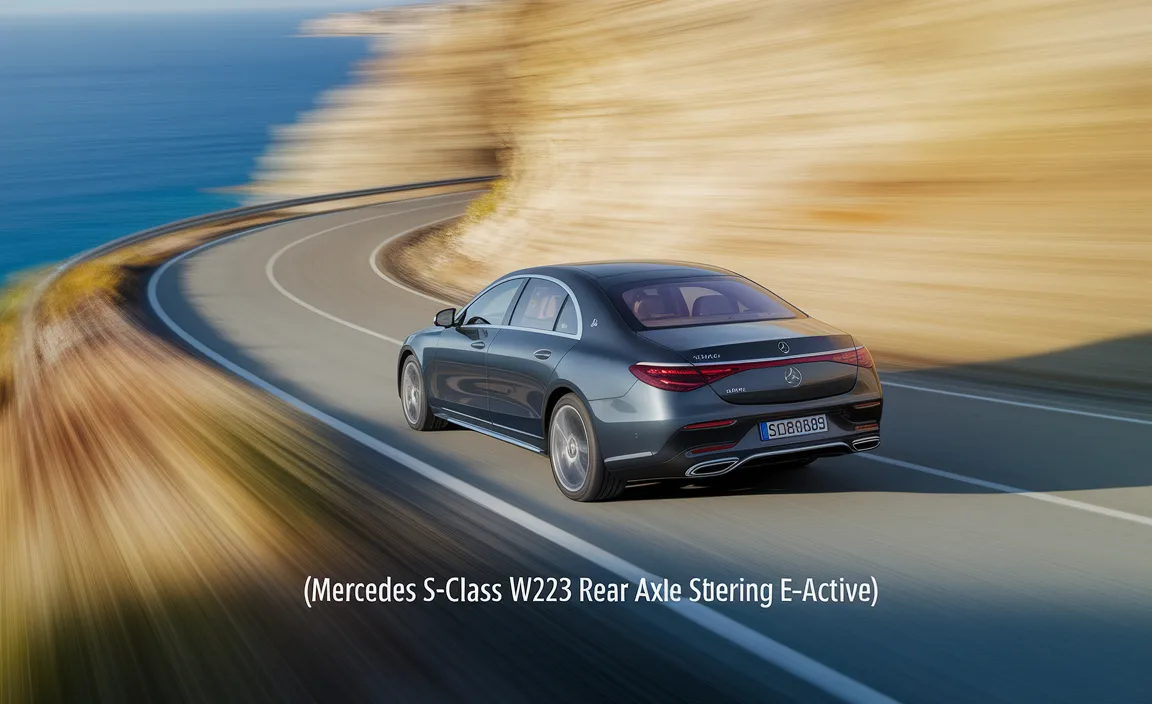
Understanding Mercedes S-Class W223 Rear Axle Steering E-Active: Genius Handling Explained
The Mercedes S-Class, historically, has been the benchmark for luxury, comfort, and advanced technology. The W223 generation has taken this to another level, particularly with its chassis and suspension innovations. Among these, the optional rear-axle steering system, often paired with the sophisticated E-Active Body Control, stands out as a masterstroke in engineering. It doesn’t just improve handling; it redefines what a full-size luxury sedan can do. Let’s dive into how this system works its magic.
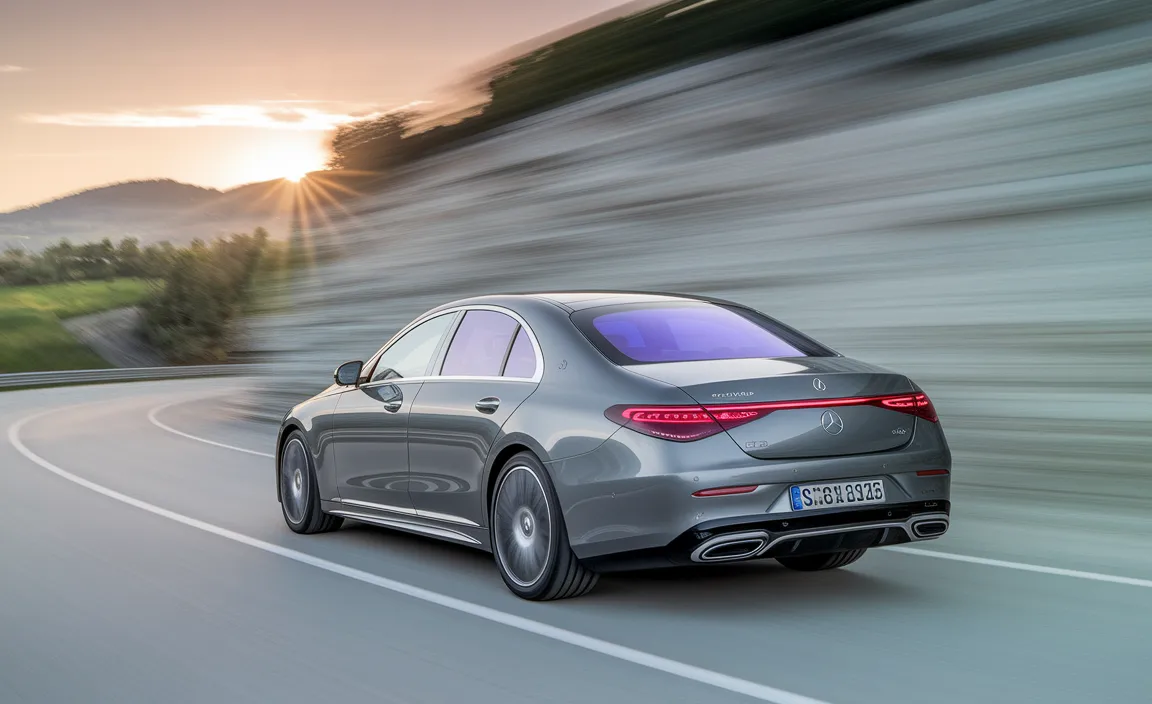
What is Rear Axle Steering?
At its core, rear-axle steering is a system that allows the rear wheels of a vehicle to turn, similar to how the front wheels do. However, the purpose and angle of steering are different and precisely controlled by sophisticated electronics.
How it Works in the W223 S-Class
The W223 S-Class offers a rear steering system that can turn the rear wheels by up to 10 degrees. There are typically two modes, depending on the vehicle’s speed:
- At Lower Speeds (e.g., parking, city driving): The rear wheels turn in the opposite direction to the front wheels. This effectively shortens the car’s wheelbase, making it much more agile. Imagine a shopping cart where the front wheels turn for steering – this system adds that controlled pivot to the rear. This allows the S-Class to navigate tight parking spaces and U-turns with a significantly smaller turning radius, often comparable to much smaller vehicles. This is a huge advantage for such a substantial car.
- At Higher Speeds (e.g., highway driving, cornering): The rear wheels turn in the same direction as the front wheels. This increases the car’s stability, especially during lane changes or high-speed cornering. It feels like the car is “gliding” or “tracking” more smoothly through corners, reducing body roll and enhancing driver confidence.
The Role of E-Active Body Control
While the rear-axle steering is impressive on its own, its integration with the E-Active Body Control (sometimes referred to as Active Body Control or ABC, but E-Active is the latest iteration for W223) elevates the driving experience further. E-Active Body Control is an adaptive suspension system that uses cameras and sensors to scan the road ahead and adjust each wheel’s suspension individually up to 1000 times per second.
When combined with rear-axle steering, E-Active Body Control can:
- Anticipate Bumps: The system can detect potholes and uneven surfaces and actively counteract them, providing an exceptionally smooth ride.
- Reduce Body Roll: It actively leans the car into corners, similar to a motorcycle, to minimize lateral forces and keep occupants level and comfortable.
- Enhance Stability: By precisely controlling the suspension and coordinating with the rear-axle steering, it ensures remarkable stability and predictable behavior in all driving conditions.
This synergy between rear-axle steering and E-Active Body Control creates a driving sensation that contrasts dramatically with the car’s physical size. It’s the perfect blend of unwavering comfort and surprising dynamism.
Benefits of Rear Axle Steering on the Mercedes S-Class W223
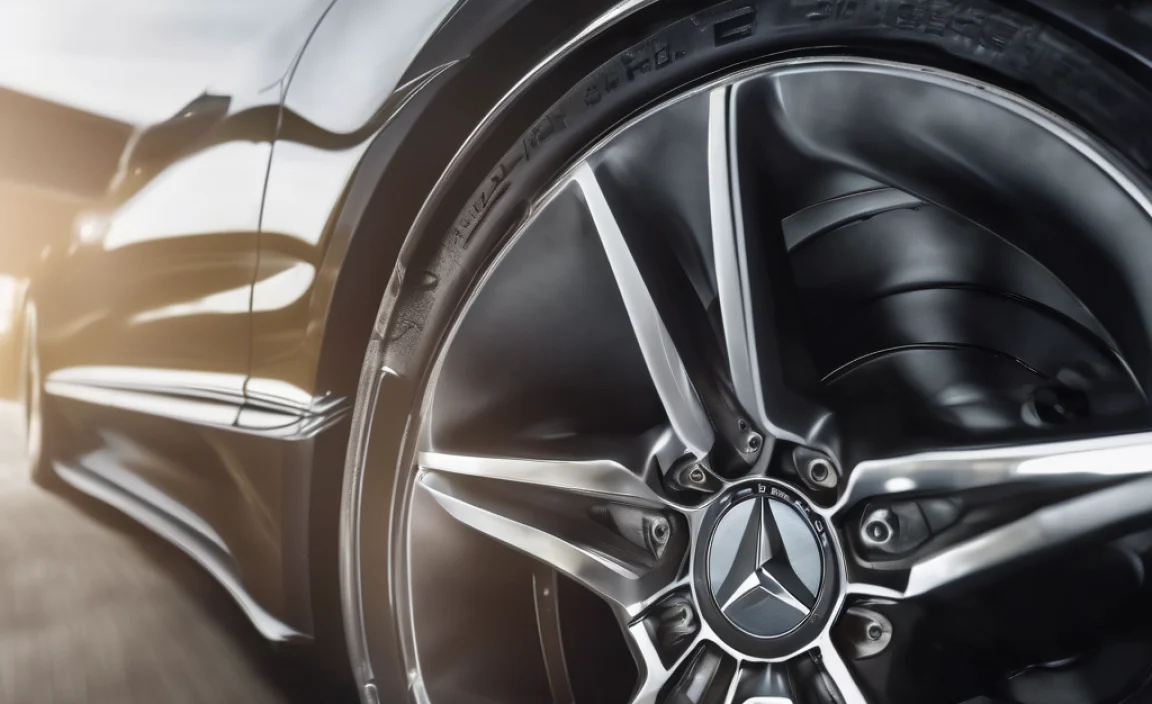
The application of rear-axle steering in the W223 S-Class isn’t just a technical marvel; it translates into tangible benefits for the driver. Here’s why it’s considered such a brilliant feature:
Improved Maneuverability
This is perhaps the most noticeable benefit. For a long, executive sedan, the S-Class can feel surprisingly nimble in urban environments.
- Parking: Tight parking garages and parallel parking become significantly less stressful. The reduced turning circle makes maneuvering in confined spaces much easier.
- City Driving: Navigating narrow city streets, making U-turns, and dealing with awkward junctions are all simplified.
Enhanced Stability and Dynamics
At higher speeds, the system subtly alters the car’s dynamics to enhance safety and driving pleasure.
- Cornering: The ability to steer the rear wheels in the same direction as the fronts at speed helps the car feel more planted and stable through turns. It feels less like the car is turning and more like it’s smoothly gliding along its intended path.
- Lane Changes: High-speed lane changes feel more fluid and controlled. The rear wheels momentarily following the front can reduce the feeling of lateral movement.
- Reduced Yaw: In some situations, it can help mitigate the car’s tendency to yaw (rotate around its vertical axis), contributing to a more composed feeling.
Comfort and Refinement
While primarily a handling enhancement, the system indirectly contributes to the S-Class’s reputation for comfort.
- Smoother Transitions: By subtly adjusting the car’s trajectory, the rear-axle steering contributes to smoother overall driving, especially when transitions in direction are needed.
- Less Driver Effort: The improved maneuverability means less strenuous steering input is required, allowing the driver to remain more relaxed.
Technological Advancement
For enthusiasts and tech-savvy owners, the system represents the pinnacle of automotive engineering, showcasing Mercedes-Benz’s commitment to innovation. It’s a conversation starter and a significant differentiator.
How to Experience Rear Axle Steering (and What to Look For)
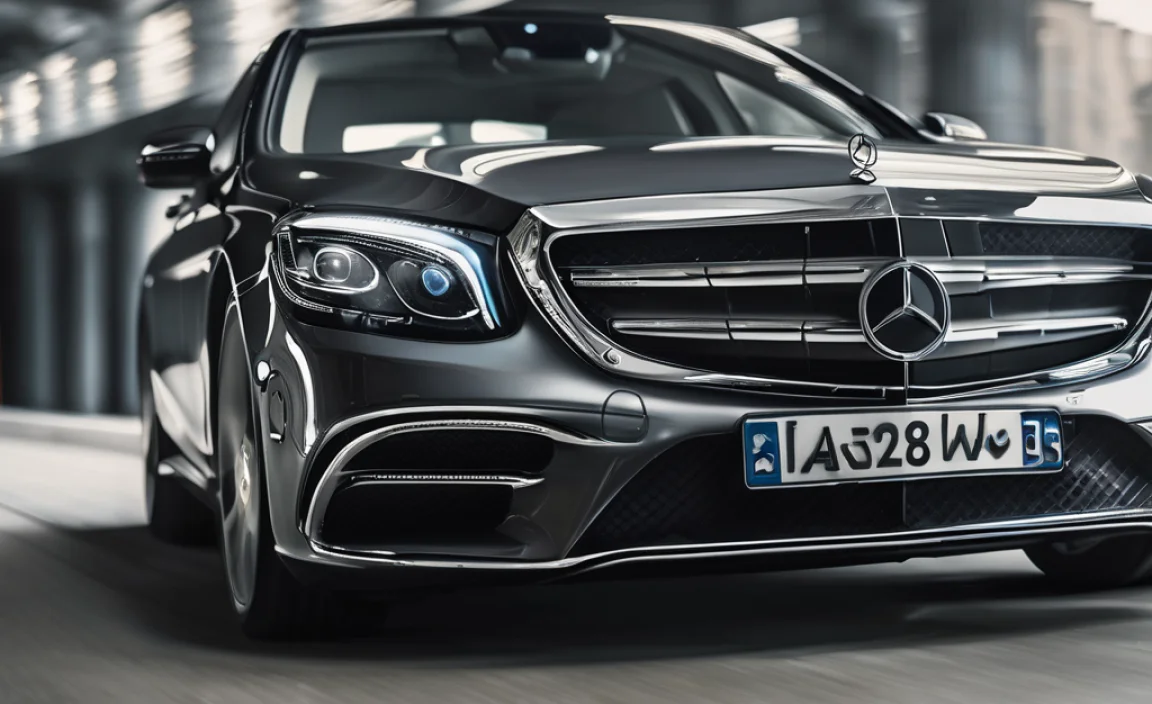
As a driver, you don’t need to actively “do” anything to engage the rear-axle steering system. It operates automatically based on your speed and steering input. However, you can learn to recognize its influence on the car’s behavior.
Feel it in Action
To truly appreciate the system, pay attention to the car’s behavior in different scenarios:
- Parking Maneuvers: When parking slowly, make a sharp turn. Notice how much tighter the turning circle feels compared to what you might expect from a car of this size. Gently swing the steering wheel left and right while moving at a crawl; you’ll feel the rear of the car pivot.
- High-Speed Corners: On a safe, open road or a highway on-ramp, accelerating through a moderate curve, feel how the car remains stable and composed. The rear end feels like it’s tracking smoothly rather than pushing wide.
- Lane Changes: When changing lanes at highway speeds, observe the car’s stability. The sensation of the rear wheels subtly assisting the turn can make the maneuver feel more linear and less of a “turn.”
Understanding the Different Angles
It’s important to know that the rear wheels don’t turn by a lot at any given moment. The maximum angle is typically 10 degrees, and often much less, depending on speed. For example, at parking speeds, the maximum opposing angle might be around 10 degrees, while at higher speeds, the sympathetic angle could be as little as 2-3 degrees.
Consider this analogy: if your front wheels turn 30 degrees, at low speed, the rear wheels might turn 10 degrees the opposite way. At high speed, they might turn 3 degrees the same way.
Visual Confirmation (If Equipped)
Some advanced driver assistance systems (ADAS) and visualization tools within the MBUX infotainment system might offer visual cues about the car’s environment and steering angles. While not a direct display of the rear-axle steering angle itself, these can help you understand the car’s sophisticated spatial awareness.
For a deeper understanding of the car’s systems, you can refer to the official Mercedes-Benz W223 S-Class owner’s manual, which often provides detailed explanations of these advanced features. You can usually find digital versions on the Mercedes-Benz Owner Services website.
Technical Specifications and Options
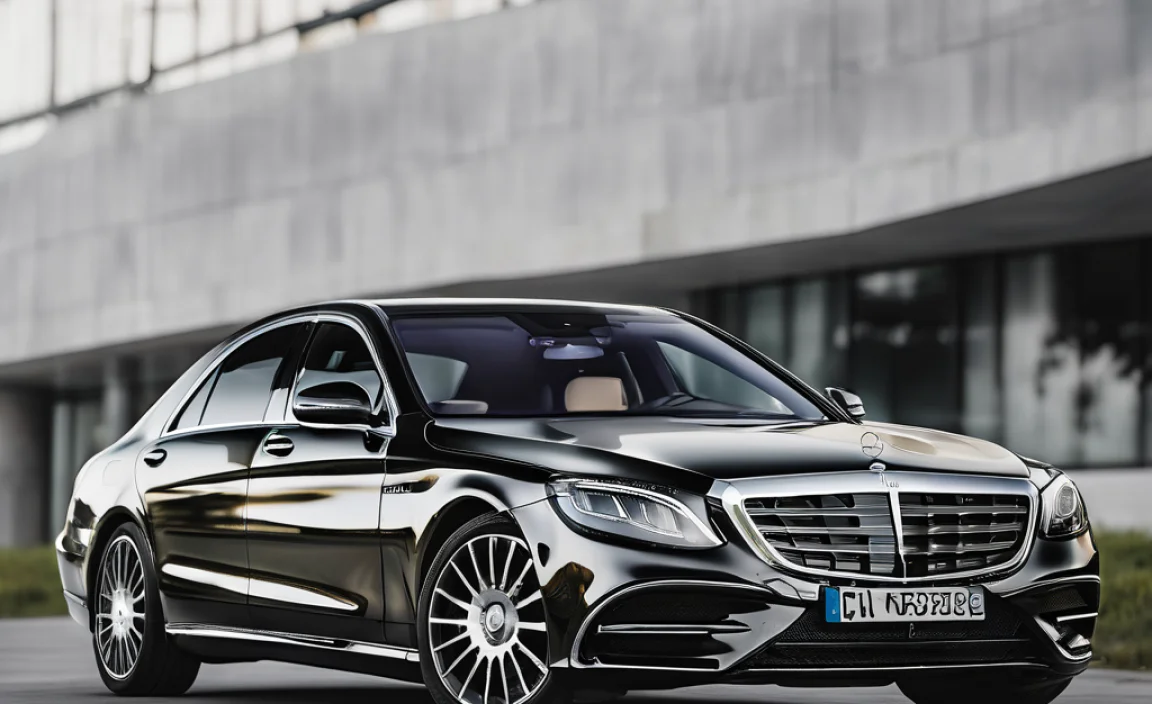
The rear-axle steering on the W223 S-Class is an optional feature and often bundled with other advanced chassis technologies. Mercedes-Benz typically offers it in two main configurations or packages:
Package 1: Simplified Rear Axle Steering
This version offers a more basic implementation, focusing mainly on enhancing low-speed maneuverability. It might include a simpler steering angle (e.g., up to 4.5 degrees) and primarily assist in reducing the turning radius for parking and city driving.
Package 2: Advanced Rear Axle Steering (with E-Active Body Control Integration)
This is the more sophisticated option, often part of a premium technology package. It offers the maximum steering angle (up to 10 degrees) and is fully integrated with the E-Active Body Control system. This package provides the most significant benefits in both low-speed agility and high-speed stability.
Key Technical Points
The system typically employs an electric motor and a linkage system to actuate the rear wheels. The control unit receives data from wheel speed sensors, steering angle sensors, and other vehicle dynamics sensors to calculate the optimal steering angle for the rear axle in real-time.
Here’s a quick look at the potential specifications:
| Feature | Description |
|---|---|
| Maximum Rear Wheel Steering Angle | Up to 10 degrees (with advanced system) |
| Turning Radius Reduction | Significant at low speeds (e.g., up to 2 meters reduction compared to no rear steering) |
| Speed-Dependent Operation | Opposite angle at low speeds, same angle at high speeds |
| Integration | With E-Active Body Control, ESP, and Dynamic Select driving modes |
| Actuation | Electric motor and multi-link system |
When ordering your W223 S-Class, selecting the appropriate technology or driving assistance package is crucial if you desire this leading-edge handling enhancement. It’s often found within packages that also include features like Active Parking Assist, Surround View cameras, and advanced suspension systems.
Is Rear Axle Steering E-Active Available on All W223 S-Class Models?
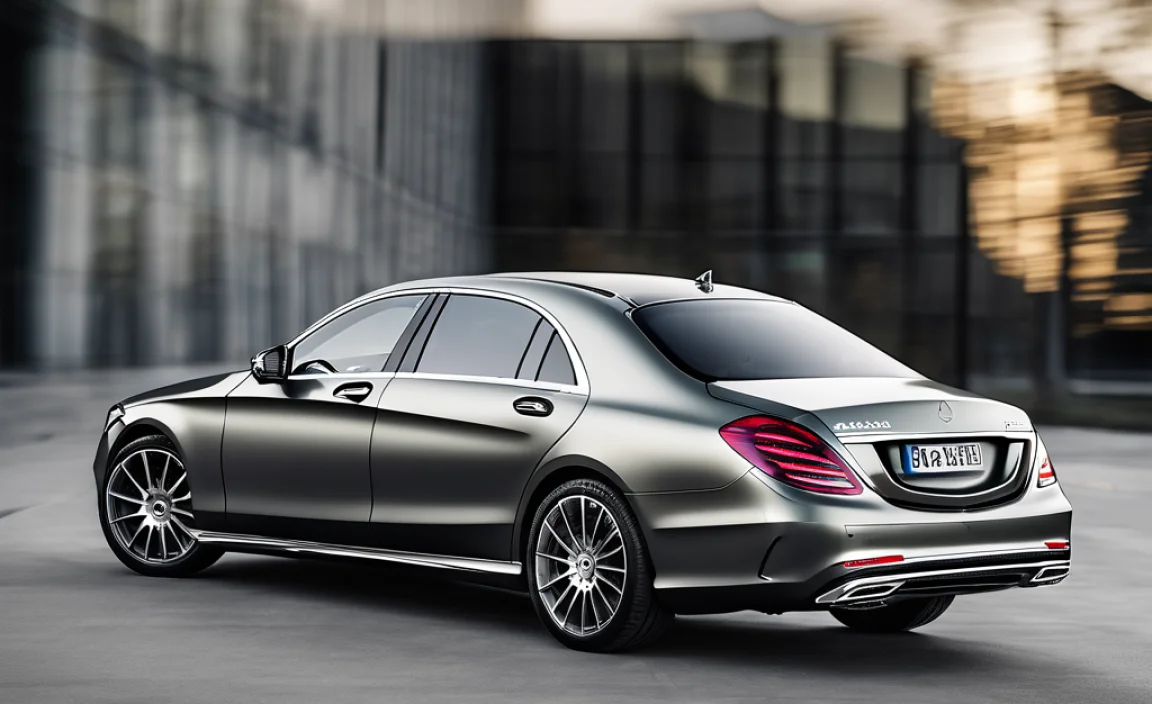
No, the comprehensive rear-axle steering system, especially when integrated with E-Active Body Control, is generally an optional feature on the W223 S-Class. It is not standard across all trim levels or engine variants. Its availability can depend on:
- Model Variant: Certain S-Class trims might have it as standard or as part of a core option package, while others might only offer it as part of a more extensive, premium technology bundle.
- Optional Packages: Mercedes-Benz often bundles advanced technologies into specific option packages. Rear-axle steering is frequently found in packages like the “Driving Assistance Package Plus,” “Technology Package,” or “Advanced Control Suspension” (which includes E-Active Body Control).
- Market Specificity: Availability can sometimes vary by region or country due to differing regulations or market demand for specific features.
Therefore, if you are purchasing a new W223 or looking at used models, it’s essential to check the vehicle’s original options list or descriptive window sticker to confirm if it is equipped with rear-axle steering. The higher the model specification (e.g., S 580 vs. an entry-level S 450, if available), the more likely it might be included or offered as a more accessible option.
For those who prioritize the utmost in driving dynamics and maneuverability, ensuring this feature is present is key. Its impact on the driving experience is substantial, transforming how the luxury sedan behaves both in tight city confines and on the open road.
Maintenance and Reliability
Modern Mercedes-Benz systems like the rear-axle steering and E-Active Body Control are designed for long-term reliability. However, like any complex system, understanding basic maintenance principles is beneficial.
What to Expect
Unlike older hydraulic systems, the electric rear-axle steering is a drive-by-wire system. This means fewer mechanical wear points and more precise electronic control. The E-Active Body Control, using electro-hydraulic actuators, is similarly robust.
- No Regular Fluid Changes for Steering: The electric steering actuator itself usually doesn’t require fluid changes. However, the hydraulic fluid for the E-Active Body Control system will have a service interval. Always consult your owner’s manual for the recommended service schedule.
- Software Updates: Like all advanced automotive systems, the control modules for rear-axle steering and E-Active Body Control can receive software updates during routine servicing. These updates often optimize performance and can resolve minor bugs.
- Visual Inspection: During scheduled maintenance, your Mercedes-Benz technician will visually inspect the steering components, linkages, and actuators for any signs of damage, leaks, or wear.
Potential Issues and Diagnostics
While rare, complex systems can encounter issues. If you notice any unusual noises, warning lights on your dashboard, or a significant degradation in handling or ride quality, it’s crucial to have the vehicle inspected by a qualified Mercedes-Benz technician.
Common diagnostic tools like Mercedes-Benz’s XENTRY system are essential for pinpointing any electronic faults within the steering or suspension control modules. These systems rely on precise sensor data, and a fault in a sensor, actuator, or communication line would be flagged by the car’s onboard diagnostics (OBD-II).
For reference on general vehicle maintenance best practices, you can look at resources from organizations like the National Highway Traffic Safety Administration (NHTSA), which provides valuable consumer information on vehicle safety and maintenance.
DIY vs. Professional Service
Given the complexity and integrated nature of these systems, any repairs or in-depth diagnostics related to the rear-axle steering or E-Active Body Control should be performed by Mercedes-Benz certified technicians. Attempting DIY repairs on these sophisticated systems without the proper tools, knowledge, and diagnostic equipment could lead to further damage or compromise safety.
Conclusion
The Mercedes-Benz S-Class W223 represents the pinnacle of automotive luxury and innovation, and its optional rear-axle steering, especially when seamlessly integrated with the E-Active Body Control system, is a testament to that. It masterfully addresses the inherent challenge of making a large, luxurious sedan feel agile and responsive. By allowing the rear wheels to turn, the S-Class gains remarkable maneuverability in tight spaces, making parking and navigating urban environments a breeze. Simultaneously, at higher speeds, this technology enhances stability and confidence, smoothing out corners and lane changes.
Understanding this sophisticated system elevates your appreciation for the engineering prowess behind your S-Class. While it operates automatically, recognizing its influence on your driving experience allows you to fully harness the capabilities of your vehicle. For owners seeking the ultimate blend of comfort, luxury, and dynamic performance, the rear-axle steering on the W223 S-Class is not just an option; it’s a genuine enhancement that solidifies its position as a truly genius piece of automotive engineering.
Common Questions About W223 Rear Axle Steering E-Active Answered
1: Does the W223 S-Class have standard rear-wheel steering?
No, the advanced rear-axle steering system, especially the version that turns up to 10 degrees and integrates with E-Active Body Control, is an optional feature on the Mercedes-Benz W223 S-Class. It’s usually part of specific technology or driving assistance packages.
2: How much does the rear axle steer on the W223 S-Class?
The rear wheels can steer by up to 10 degrees in the most advanced configuration. At low speeds, they steer in the opposite direction to the front wheels to reduce the turning radius. At high speeds, they steer in the same direction as the front wheels to enhance stability.
3: What is E-Active Body Control and how does it work with rear steering?
E-Active Body Control is an adaptive suspension system that uses cameras and sensors to actively adjust each wheel’s suspension in real-time. When paired with rear-axle steering, it creates a highly integrated system that enhances agility, stability, and ride comfort by precisely controlling the vehicle’s posture and movement.
4: Can I feel the rear-axle steering when driving?
Yes, you can feel its effects, especially at low speeds during parking maneuvers where the turning radius is noticeably tighter. At higher speeds, it contributes to a feeling of increased stability and composure through corners and during lane changes, though it’s a more subtle sensation.
5: Is the rear-axle steering system reliable?
Mercedes-Benz systems are engineered for high reliability. The electric rear-axle steering generally requires minimal maintenance. However, like all complex automotive systems, it’s essential to have it inspected by a qualified technician during scheduled maintenance.
6: What are the primary benefits of having rear-axle steering on an S-Class?
The main benefits are significantly improved maneuverability, making parking and low-speed driving much easier, and enhanced stability at higher speeds during cornering and lane changes. It makes a large luxury car feel more agile and secure.
7: Should I purchase a W223 S-Class with rear-axle steering if I don’t drive in tight cities?
While the benefits are most pronounced in urban environments, the enhanced stability at higher speeds is beneficial for highway driving and spirited cornering on any road. If you value superior handling and a modern driving experience, it’s a worthwhile option regardless of your primary driving location.